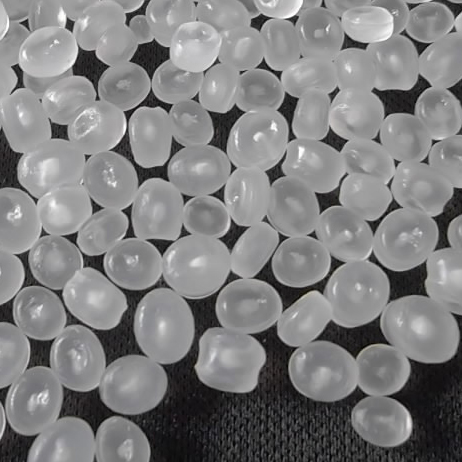Products

Polypropylene
Polypropylene (PP) is a versatile thermoplastic polymer made from the polymerization of propylene monomers (C₃H₆). It is one of the most widely used plastics globally, known for its durability, chemical resistance, and versatility. Polypropylene is part of the polyolefin family, similar to polyethylene, but with...
More Details
Polystyrene
Polystyrene (PS) is a synthetic polymer made from styrene monomers (C₈H₈). It is a widely used plastic that can come in both a rigid and foam form, making it versatile for many applications. Polystyrene is known for its clarity, rigidity, and insulation properties. Types of...
More Details
Polyethylene
Polyethylene (PE) is a versatile polymer, one of the most widely produced plastics globally. It is composed of long chains of ethylene monomers (CH₂=CH₂), making it part of the polyolefin family. Depending on the polymerization method, different types of polyethylene are produced, each with distinct...
More Details
Liquefied natural gas (LNG)
Liquefied natural gas (LNG) is natural gas (primarily methane, CH₄) that has been cooled down to liquid form for ease of storage or transport. Liquefying natural gas reduces its volume by about 600 times, making it much more efficient to store and ship, especially over...
More Details
Compressed Natural Gas (CNG)
Compressed Natural Gas (CNG) is a form of natural gas (primarily methane) that is compressed to less than 1% of its volume at standard atmospheric pressure, making it a practical fuel for vehicles and other applications. CNG is known for being a cleaner alternative to...
More Details
Liquefied Petroleum Gas (LPG)
Liquefied Petroleum Gas (LPG) is a flammable hydrocarbon gas that is used as fuel for heating, cooking, vehicles, and other applications. It is commonly a mixture of propane and butane, which are gases under normal atmospheric conditions but can be liquefied at moderate pressure. LPG...
More Details
Urea fertilizer
Urea fertilizer is one of the most commonly used nitrogen fertilizers in agriculture. It is a highly concentrated form of nitrogen, containing about 46% nitrogen by weight, which makes it efficient and economical for promoting plant growth. Key Properties of Urea: 1. High Nitrogen Content:...
More Details
Sulfur is a chemical element with the symbol "S" and atomic number "16". It is a non-metal, abundant in the Earth's crust and atmosphere, and is essential for life. Sulfur appears in yellow crystalline form and is insoluble in water. It can also exist in...
More Details
Sponge Iron Sludge
Sponge iron sludge refers to a byproduct or waste material that is generated during the production of sponge iron, also known as direct reduced iron (DRI). Sponge iron is produced by reducing iron ore (usually in the form of pellets or lumps) in the presence...
More Details
Iron Ore Pellets
Iron ore pellets are small, round balls of iron ore that have been processed from iron ore concentrate. They are used as a key raw material in steel production, especially in blast furnaces and direct reduction iron (DRI) processes. Iron ore pellets have a high...
More Details
Iron Oxid Shell
An "iron oxide shell" refers to a thin layer of iron oxide that forms on the surface of iron or steel when it reacts with oxygen in the air or other oxidizing environments. The formation of this shell is part of the **oxidation process** and...
More Details
Iron Ore Concentrate
Iron ore concentrate is a refined and processed form of iron ore, specifically produced to increase the percentage of iron (Fe) and remove impurities like silica, alumina, phosphorus, and sulfur. It is an intermediate product used in steelmaking after it has been beneficiated or upgraded...
More Details
Hematite
Hematite is an iron oxide mineral with the chemical formula "Fe₂O₃". It is one of the most important iron ores, as it contains a high percentage of iron. Hematite appears in a variety of colors, ranging from metallic gray or black to reddish-brown, depending on...
More Details
Molybdenum oxide
Molybdenum oxide (commonly referred to as "molybdenum trioxide" or "MoO₃") is a chemical compound that is the primary commercial source of molybdenum. It is an intermediate product in the production of molybdenum metal, as well as an important industrial chemical used in various applications. Key...
More Details
Ferro Molybdenum
Ferro Molybdenum (FeMo) is an alloy of iron and molybdenum, commonly used in the steelmaking industry to add molybdenum content to various steel types. Molybdenum is a crucial element in steel alloys as it enhances the strength, toughness, corrosion resistance, and heat resistance of the...
More DetailsLoading